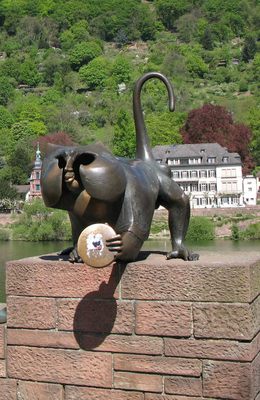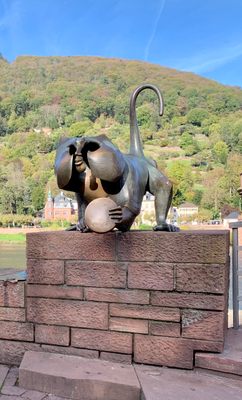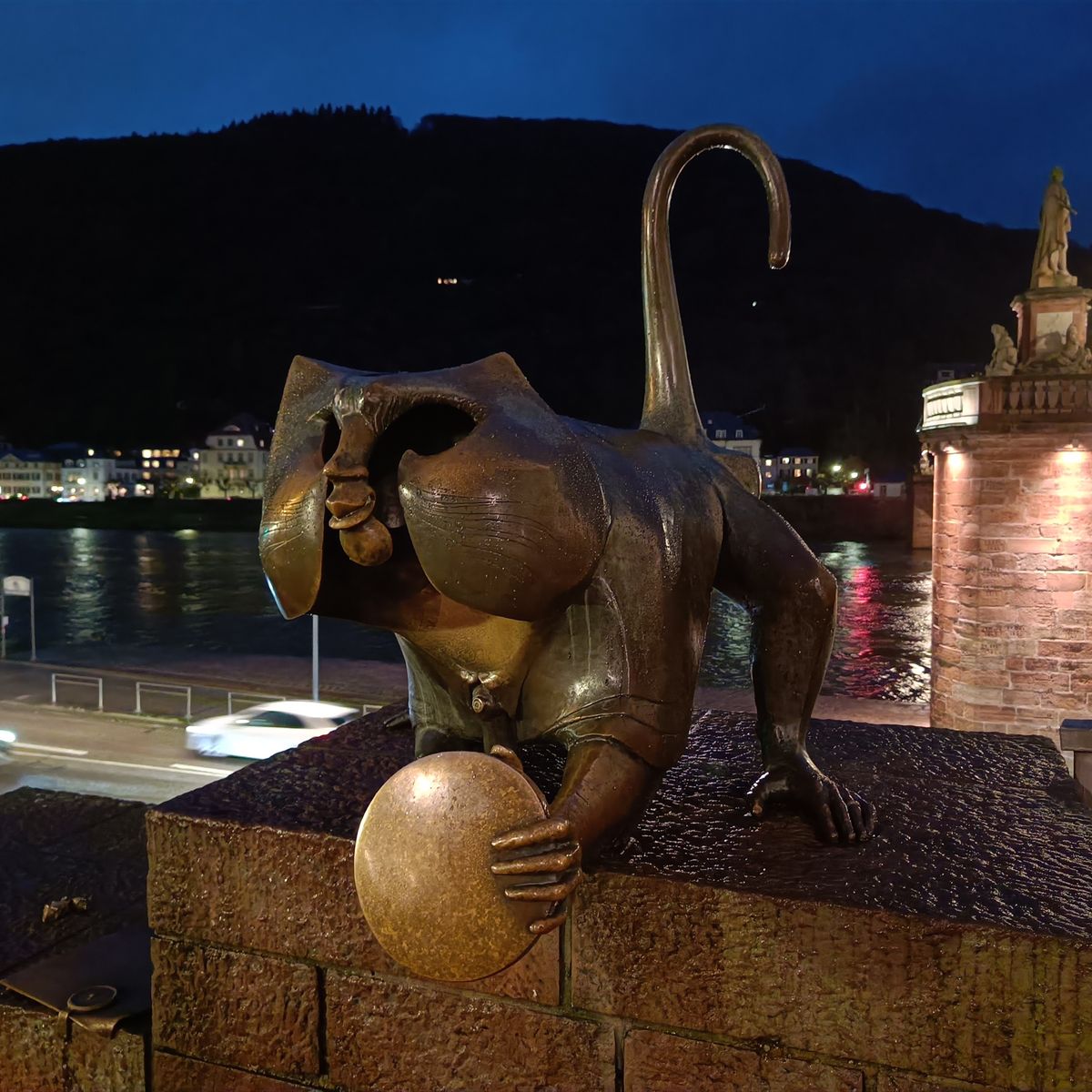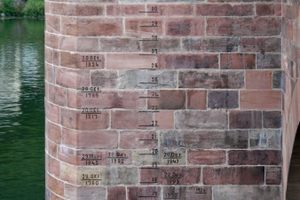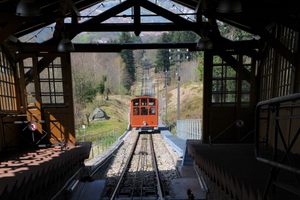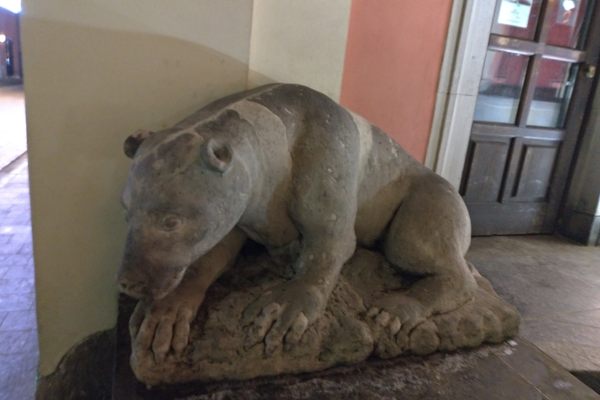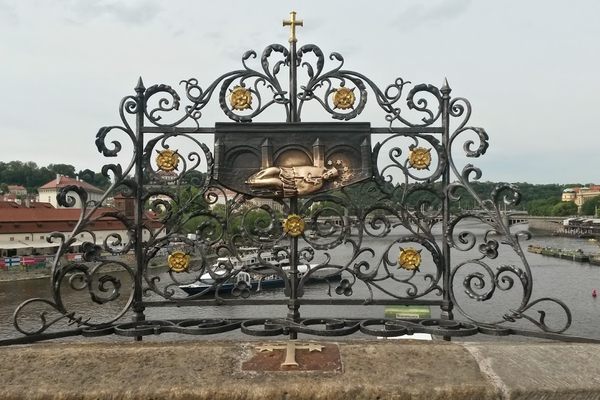About
According to legend, the bronze monkey on Heidelberg's Old Bridge was meant to remind those who crossed it from either side to look over their shoulders at where they’ve come from. Whether a Heidelberg citizen lived inside or outside of the city, it reminded them they were no better than their respective counterpart.
The current statue has only been around since 1979, though the bridge has featured a monkey at the spot as far back as the 15th century. An earlier incarnation also had the monkey holding a mirror up to passersby, but its other hand was clutching its butt. It disappeared somewhere around the Palatinate War of Succession, which lasted from 1689 to 1693.
The current statue, sculpted in bronze by Professor Gernot Rumpf, has the free hand up front, fingers shaping the mano cornuta (horned hand) to prevent the evil eye. The head is hollow with eye holes, which now allows visitors to take selfies while using it as a mask.
The monkey is said to be good luck. Rubbing the mirror will bring you money; rubbing his fingers will ensure your return to Heidelberg; and rubbing the little bronze mice nearby will bring you fertility.
A plaque below the guenon features a poem written about the monkey by the Baroque writer Martin Zeiler in 1632: “Was thustu mich hie angaff en?/Hastu nicht gesehen den alten Affen zu Heydelberg/Sich dich hin und her/Da findestu wol meines gleichen mehr.” (Why are you staring at me?/Haven't you seen the old monkey of Heidelberg/Look to and fro/There you will find many more of my own kind.)
While the poem playfully mocks those who read it, placing their head in the monkey’s bronze mask offers a chance to participate in, rather than be the target of, its antagonism. One is, however momentarily, the monkey, surveying the waiting tourists, judging their prying eyes.
Related Tags
Community Contributors
Added By
Edited By
Published
September 11, 2017

